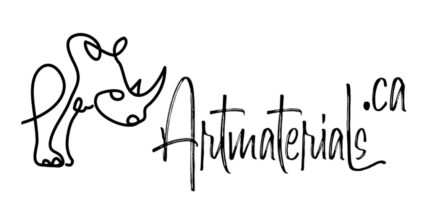- You have no items in your shopping cart
- Continue Shopping

Support for your canvas is another important “ingredient” of a successful painting. Your canvas can be stretched on wooden bars or glued to a cardboard or wood, or can be used as canvas paper. Let’s take a look for these options and see how they work.
Stretched canvas
Stretched canvas has many benefits before other kinds of support:
- Framing is not required for such paintings
- Paintings look more presentable and expensive
- Restoration gets easer
In general, I prefer stretch canvas over other options. However, not all stretchers are the same. There is something we can choose and something we can’t test when purchasing.
As artists, we can choose depth of canvas: is it gallery or regular. I’d suggest for canvasses longer than 24 in gallery stretchers, because narrower canvas can show signs of deformation with time. Large canvasses (over 60 in) should have extra supporters, that keep corners strait.

All these are things we can choose and check before buying.
However, there is something we can’t check before making a purchase – that’s quality of wood itself. Quality stretching bars should be made of hard wood, such as oak, fir, birch, beech or harder sorts of pine. Most Canadian-made stretching bars are made of pine. Also, good stretcher should be fully kiln dried and have relative humidity between 8% and 15%.
Cheaper canvasses are made of softer wood and normally not fully dried. With changing environment (temperatures and humidity indoors), these bars change their shapes, get crooked and can show cracks. That’s the main problem of cheap wood.
Sometime ago I got very expensive paintings of Russian Avant-Garde that were not treated respectfully by a previous owner and were stretched on wood plank from a construction store. As a result, frames got crooked and even caused damage of painting layer. So, now I have to restore them.
Stretched cavas in general is more expensive option than any other kinds of support for canvas. Especially after 2021, then lumber prices jumped up incredibly. For that reason artists look at other alternatives.
Canvas on Board
Canvas on cardboard is another option for artists. However, it can hold only small sizes (up to 16 in) otherwise painting will cause cardboard deformation. Canvas on cardboard also requires framing that adds extra costs and may eliminate and savings against buying stretched canvas.
If for acrylic painting canvas on board can be a good alternative to more expensive canvas, for oil painting this option is unlikely to work well. The problem is in polymerization of oil in the binder.
Cardboard is a very absorbing material and literally drains oil from your painting causing colour fading, unpredictable and uneven drying time as well as faster aging.
Canvas Paper
Canvas paper is an option to test colours or to make sketches on the go, but, unfortunately, for more valuable works it’s not an option at all. Usually, canvas paper is more fragile than normal canvas, has acrylic emulsion primer rich in chalk to create a thicker look. All these makes further stretching impossible without damage to a painting layer.
In addition to that, for oil painting we have all the problems with uneven drying, faster aging and fading, because chalk is very porous and absorbs oil.




